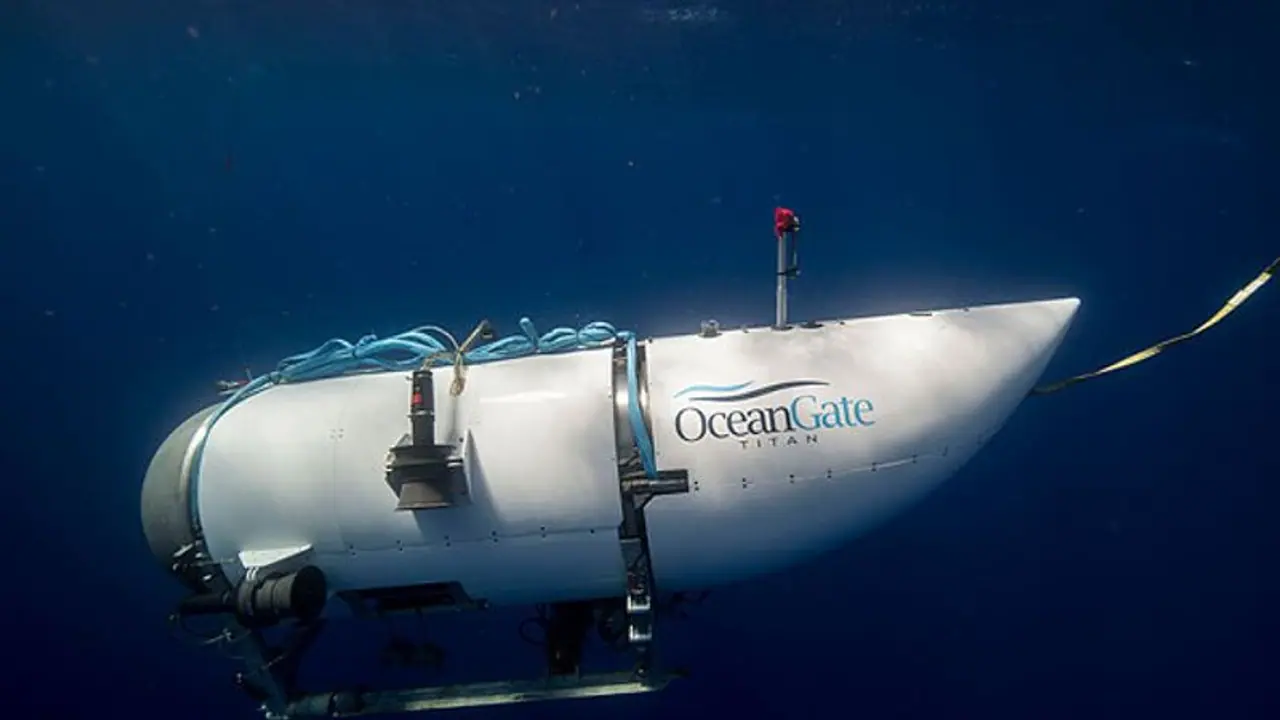With five people on board, the Titan submarine disappeared in the Atlantic Ocean on June 18 while diving to the sunken Titanic liner. Days later, the wreckage of the submersible was discovered approximately 1,600 feet from the bow of the Titanic. So what went wrong? Girish Linaganna explains
The Titan, a meticulously engineered 6.7-meter-long submarine, vanished from the radar just one hour and forty-five minutes into an eleven-hour deep-sea dive on June 18. Housing a 96-hour oxygen supply, the submarine was equipped to operate securely up to depths of 4,000 meters and travel at speeds of approximately 5.5 kilometres per hour.

Yet, the Titan's last voyage was fated to be as tragic as the vessel it set out to explore. OceanGate, the company that makes submersibles, says on its website that it plans to do similar tours every year after successful trips to the Titanic's wreck in 2021 and 2022. One of the trips, which included 12 dives, was set to happen in the summer of 2023. There are Twitter posts from the company about how the first few dives went.
For an eight-day trip to see the famous sunken liner, the company charges private clients $250,000. The Titanic is at the bottom of the Atlantic Ocean, 3800 meters down. It is 600 km from the island of Newfoundland, which is in
northeastern Canada.
On June 22, approximately 500 meters from the head of the sunken Titanic, five large bathyscaphe fragments were discovered. There were two portions of the Titan's hull and two pieces of the submarine's outer skin. OceanGate announced that everyone onboard the underwater vehicle was dead.
Carl Hartsville of the Woods Hole Oceanographic Institution stated in a briefing that the wreckage was found approximately 1,600 feet from the bow of the 1912 sunken Titanic, and there was no indication of a collision. Three individuals were aboard the Titan's final flight: British businessman and Action Group creator Hamish Harding, Pakistani businessman Shahzada Dawood and his 19-year-old son Suleman. The submarine also carried two crew members: the French explorer Paul-Henri Narjolet and the originator of OceanGate, Stockton Rush.
The Catastrophic Implosion Theory
According to the rescuers, the tragedy on the bathyscaphe may have been caused by a catastrophic implosion, an inward detonation. Almost certainly, the submarine hull could not withstand the water pressure at a depth of 3,800 meters.
An implosion is the sudden destruction of an object induced by external pressure exceeding internal pressure. In milliseconds, an implosion occurs when an object collapses in on itself, a reverse of an explosion. Crush depth is the depth at which a submarine implodes, typically greater than the design depth at which it can operate. Due to a flaw in the hull, the current suspect, the Titan, could have imploded in the design depth, which is the safe depth to operate. The atmospheric pressure at sea level is 14.7 pounds per square inch (PSI). As one descends deeper into the ocean, the pressure continues to increase. The water pressure at the Titanic wreck location is approximately 6,000 psi. According to former US Navy officer and Florida International University professor Eileen Marty on CNN, the implosion speed is 2.4 thousand kilometres per hour. In such a short time, the human brain does not have time to realize what happened.
The investigation will determine the precise causes and timing of the catastrophe, but US Coast Guard experts are already inclined to believe that it occurred before the start of the search, sometime after the Titan sank. During the entire duration of the rescue operation, the sonar buoys that were deployed in the Bathyscaphe search area did not detect any strange noise.
Shortly after the connection with the Polar Prince ship, Titan's mothership, was lost, the US Navy, using a covert submarine surveillance acoustic system, recorded a sound similar to the explosion of a mini-submarine.
Titan was not safe. Experts had previously warned in writing that the submersible's design was too 'experimental for passenger transport and must be certified'.
James Cameron, the director of the film Titanic, stated that he was initially sceptical of OceanGate's plan to construct the Titan submersible's hull from a carbon fibre and titanium composite.
Titan cannot be reached even with a military submarine. Most submarines can operate up to 300 meters below the surface of the water. Submarines of the US Seawolf class made of 2-inch-thick HY-100 steel alloy are said to dive as deep as 914 meters. Thus, a Seawolf-class submarine would implode approximately 9,500 feet above the seafloor where the Titan disappeared.
The tragic demise of the Titan submarine serves as a poignant reminder of the relentless, unforgiving nature of the deep sea. The failed expedition not only parallels the Titanic disaster in its suddenness and scale of loss but also echoes the age-old human pursuit of exploration and the inherent risks that come with it.
As we move forward, it becomes imperative to reassess our approach towards deep-sea exploration, particularly the safety measures in place. In memory of
those who lost their lives in the quest for knowledge and adventure, the disaster underscores the need for rigorous design certification and cautious decision-making.
It serves as a stark warning that the depths of the ocean remain a formidable frontier, one that demands respect and careful navigation. Yet, despite the tragedy, the spirit of exploration endures, propelling us onward in our journey to unlock the mysteries of the deep.
